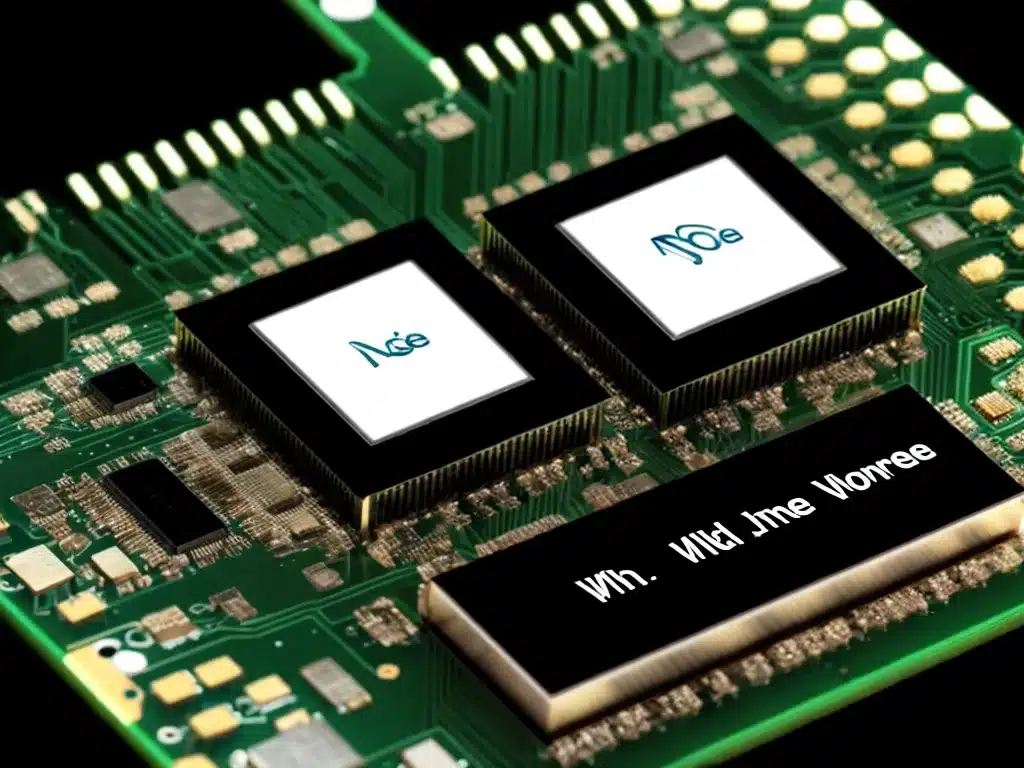
Introduction
For decades, Moore’s Law has governed the exponential growth of computing power. However, with the limits of transistor scaling now in sight, the free ride is ending. Moore’s Law states that the number of transistors on an integrated circuit doubles about every two years. This observation has proven remarkably prescient, driving the tech industry to deliver ever more powerful chips and devices. But the party can’t go on forever.
As chipmakers approach the physical limits of transistor scaling, they must find new ways to deliver performance gains. This article examines why Moore’s Law is ending, its profound impact on the computing industry, and emerging solutions to the slowing of this exponential growth curve.
Why Moore’s Law Is Ending
Since the 1960s, chipmakers have reliably doubled transistor counts every couple years. Packing more transistors into the same space enables faster switching speeds and more computing horsepower per chip. However, this approach is running out of steam.
At the bleeding edge, chipmakers like Intel and TSMC are struggling to shrink transistors below 5 nanometers. Within this size regime, unavoidable physics limit further scaling:
- Quantum tunneling effects allow current to leak through extremely thin material layers
- Increased manufacturing defects reduce yields
- Significant power and heat issues arise in densely packed circuits
Engineers have pulled off remarkable feats to prolong Moore’s Law. But without a major breakthrough, this exponential growth trend cannot continue much longer.
The End of “Free” Performance Gains
For the computing industry, the end of Dennard scaling has equally profound implications. Since the 1960s, chipmakers have delivered performance gains of about 40% per year. But with Moore’s Law slowing, this era of “free” and predictable performance increases is over.
In the past, software developers could simply wait on more powerful hardware. But now they must pursue more efficient algorithms, languages, architectures and other optimizations to achieve performance gains. The free lunch is over.
Pursuing “More Than Moore” Solutions
Facing the end of transistor scaling, chipmakers are pursuing a number of “More Than Moore” solutions. These strategies seek to boost chip performance through innovations outside of transistor scaling:
3D Packaging
Stacking chips and components vertically using interconnects substantially increases computing density and power efficiency. AMD pioneered this approach with its Ryzen chiplet design, while Intel employs 3D packaging in products like Lakefield and Foveros. Expect heterogeneous, modular 3D chip designs to become commonplace.
Chiplets and Modularity
Breaking large chips into smaller modular “chiplets” offers major flexibility advantages. This Lego block-like approach allows mixing and matching of IP blocks from different sources. It also improves yields, operational efficiency and reusability across designs.
New Transistor Materials
Finding better materials can further enhance transistor performance. For example, using elements like graphene or carbon nanotubes in place of silicon could enable faster switching at lower voltages and with less heat.
Specialized Architectures
Optimizing architectures for specific workloads or models like AI/ML delivers big efficiency gains. This strategy is central to GPU computing and the explosion of AI accelerator chips.
The Search for a Path Forward
Moore’s Law has been the engine of the computing industry’s tremendous progress over the past 50 years. But with the limits of transistor scaling now in sight, its exponential growth is ending.
This deceleration will significantly disrupt the industry. However, through persistent innovation and a spirit of creative entrepreneurship, the semiconductor ecosystem will chart a path forward.
The search is on for new materials, computing paradigms and specialized architectures. With sustained effort across the ecosystem, the many benefits of faster, cheaper, and more energy-efficient computing can continue advancing society for decades to come.












